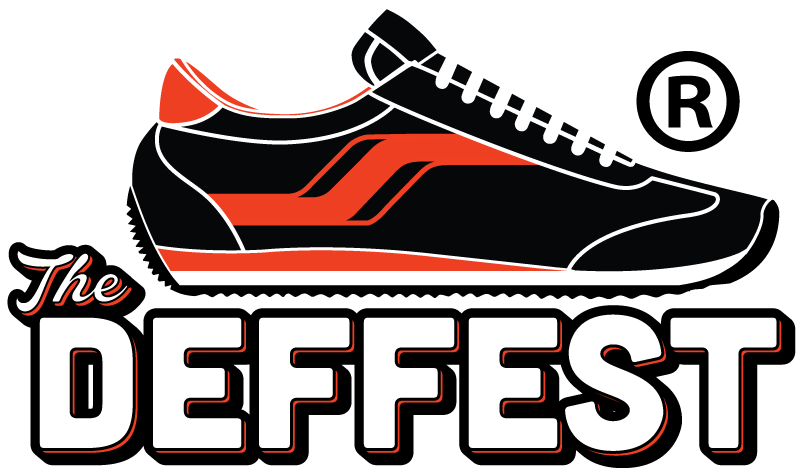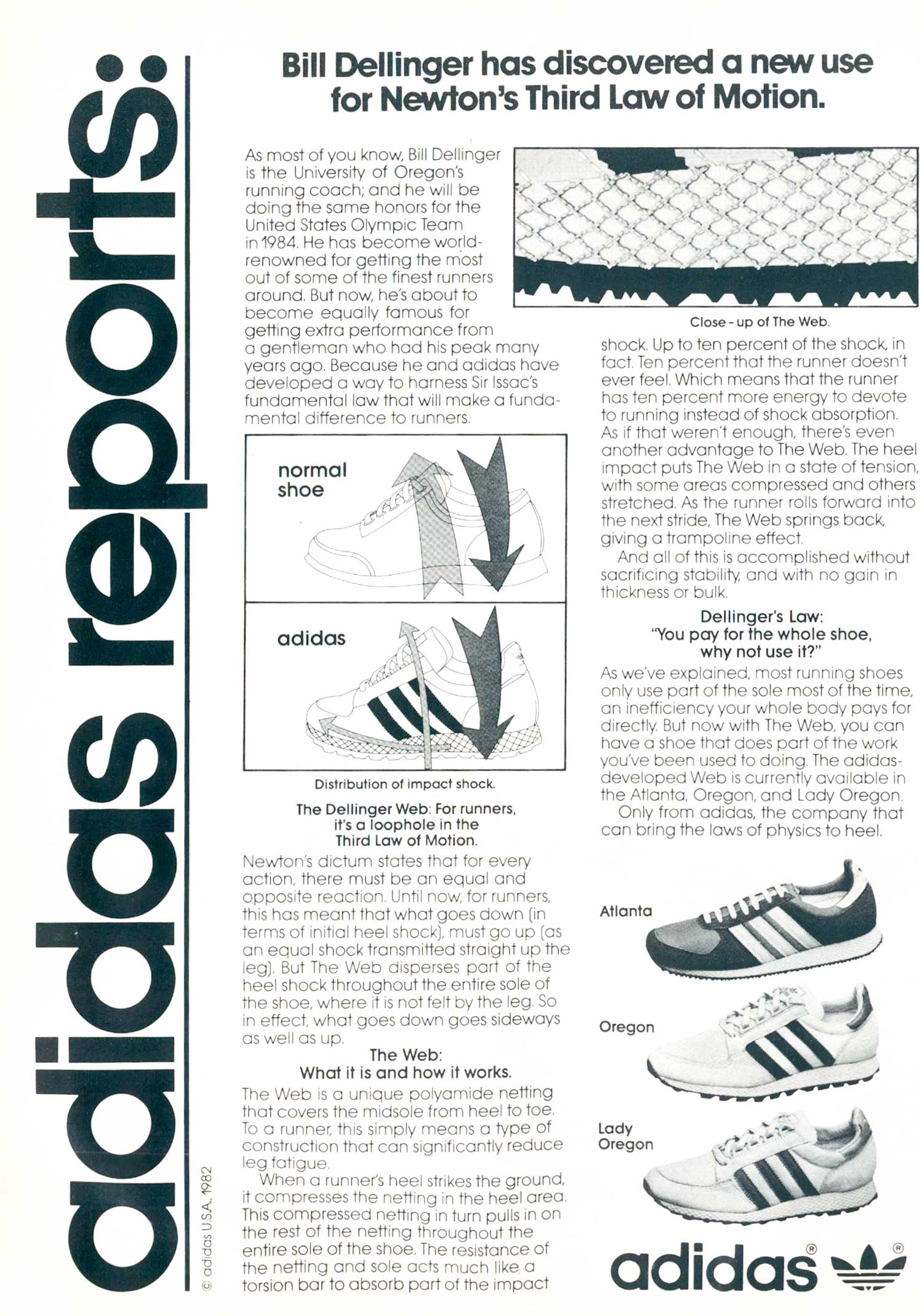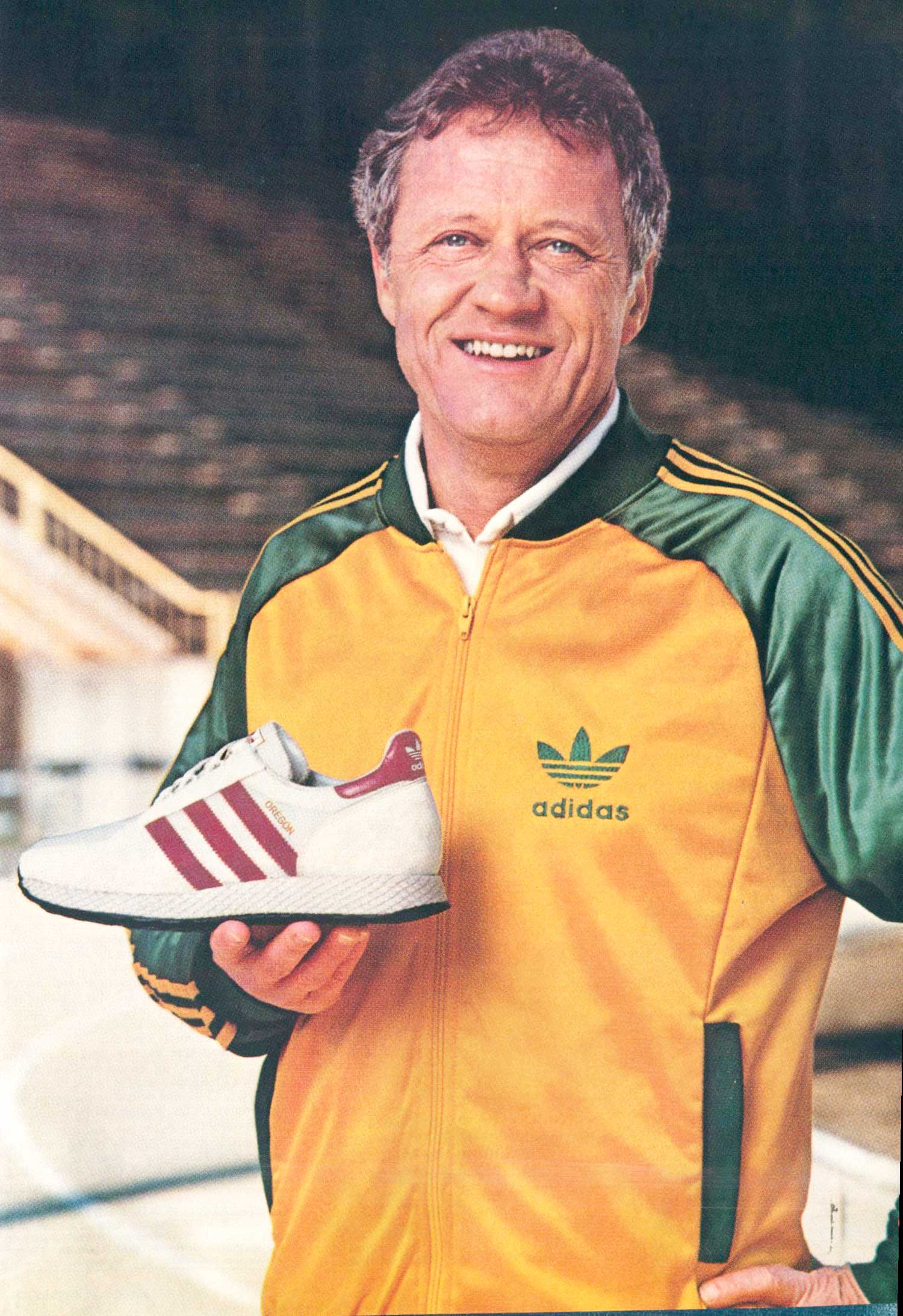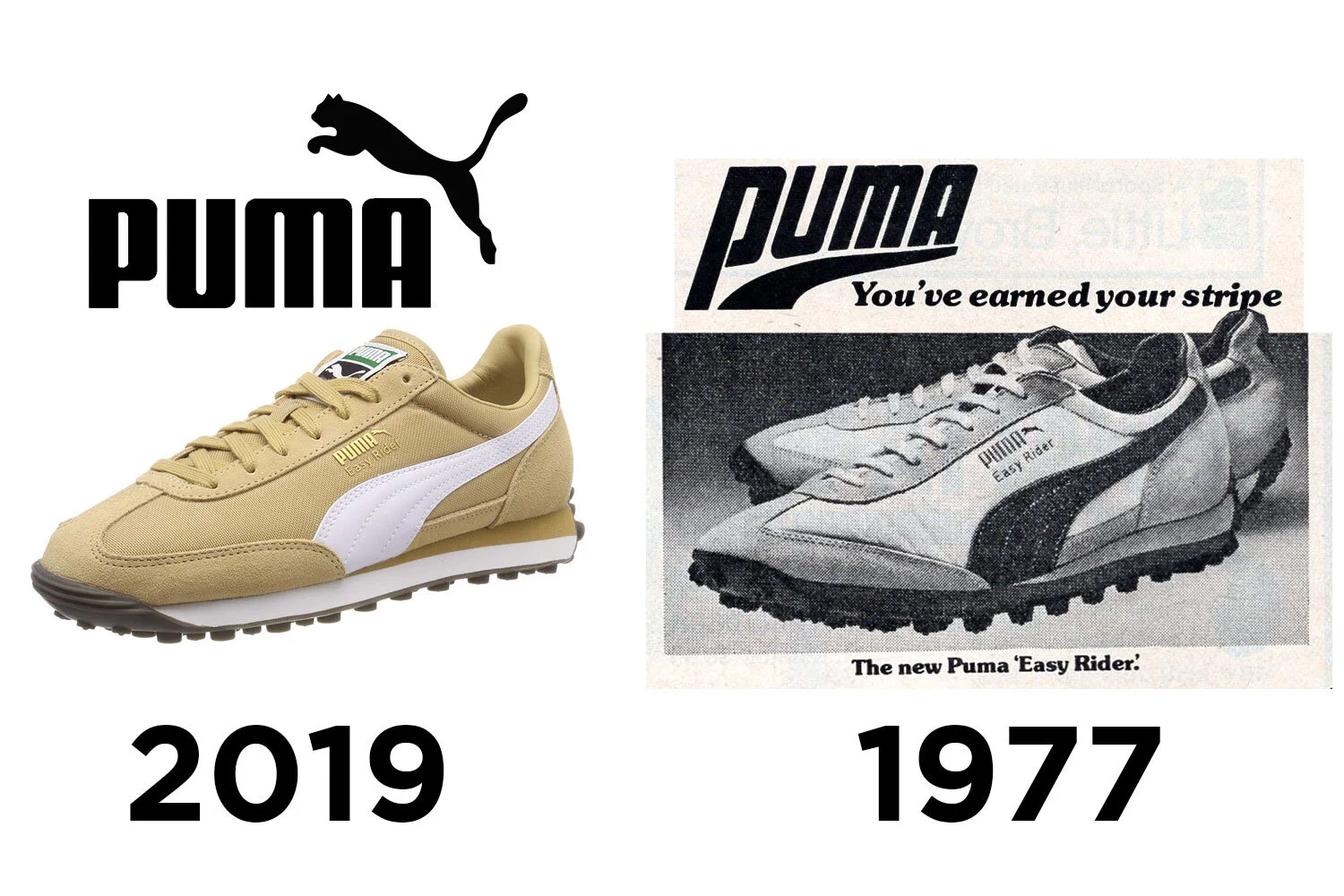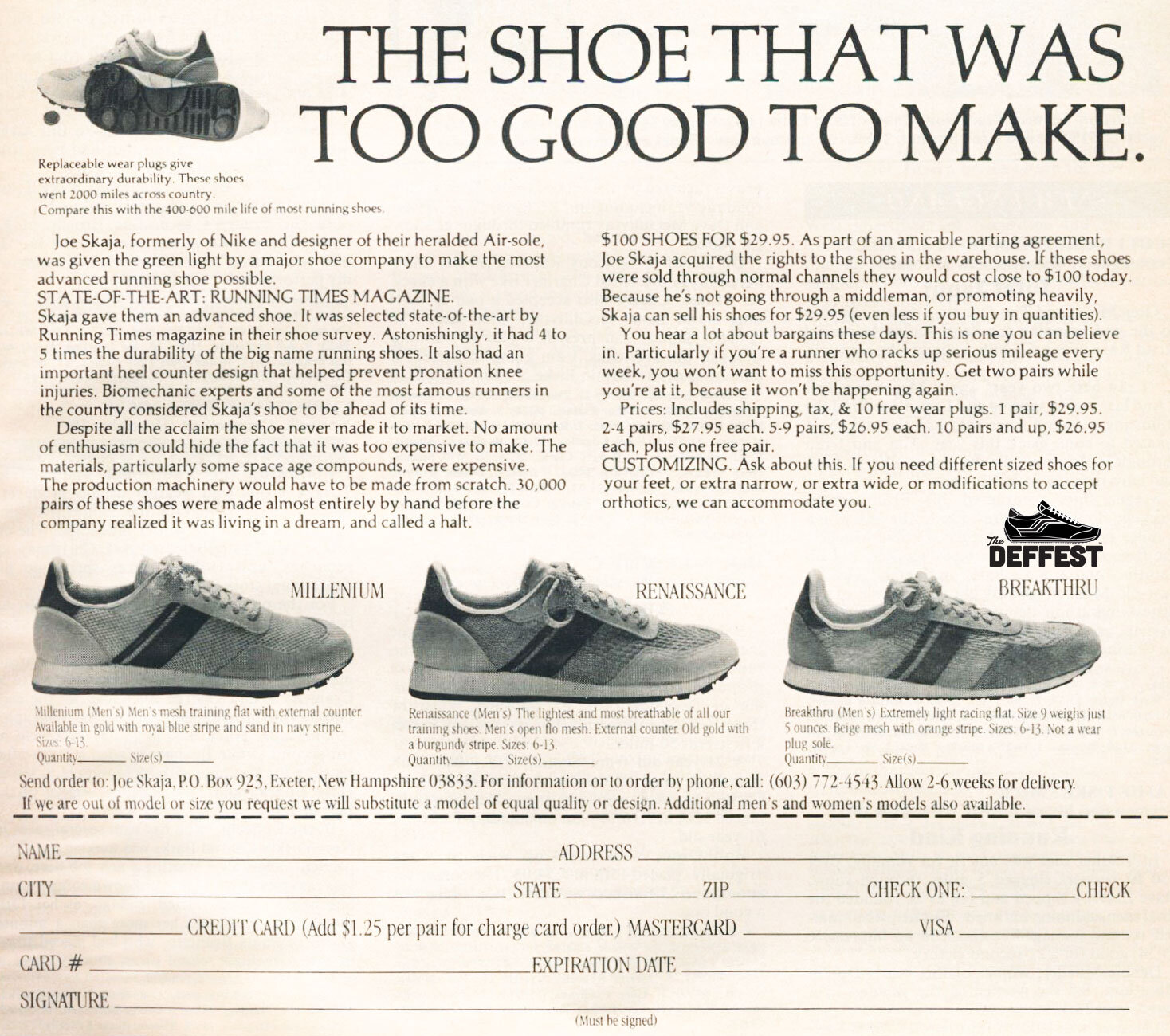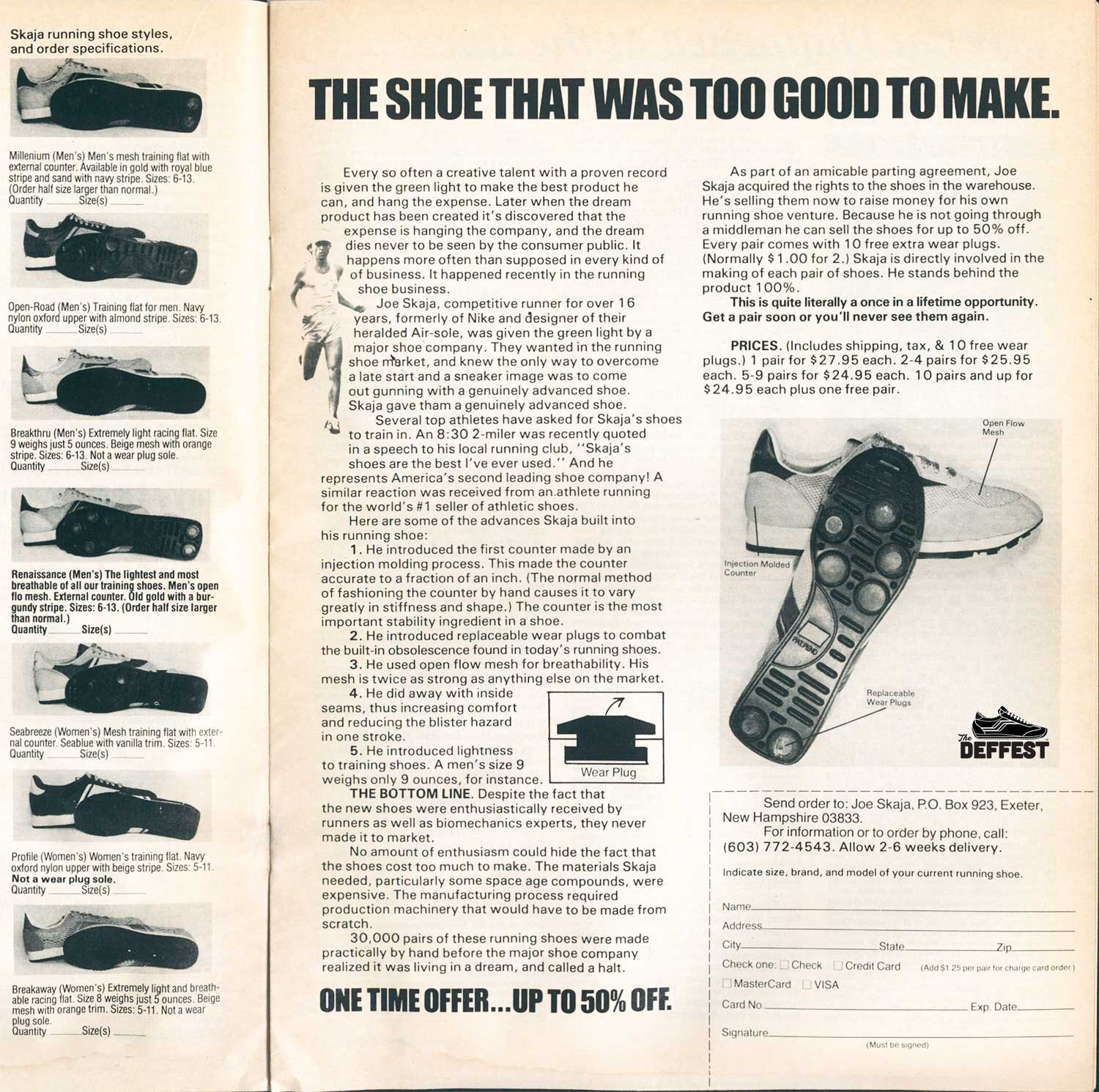Today we’ve got a vintage 1984 sneaker ad for Skyya brand running shoes. This brand was launched by Joe Skaja, a former Nike designer, and featured a patented replaceable plug system. These plug system sneakers were originally put out under the Keds brand name before they were eventually moved to his own brand. If you’re interested in this innovation you can see a couple of other ads for these here and here along with a link to the original patent here.
This original vintage Skyya print ad is available at our web store RewindRunning.com.
Ad info is below:
SKYYA’S THE LIMIT
Joe Skyya never stops reaching for new horizons. As a runner he competed in the 1976 Olympic Marathon Trials. As a designer he created the Nike Air-Sole® and worked with aerospace engineers to pioneer the use of revolutionary compounds for running shoes.
Too Good To Make. Skyya was hired by a major corporation to make the most advanced running shoe on the market. He delivered. It was selected State-of-the-Art• by Running Times magazine in their 1982 and '83 shoe surveys. Skyya's shoe was one of the lightest, most durable training shoes ever created, yet the company stopped the project without selling a single pair. Excel-lence was sacrificed for higher profits and broader markets.
A Dream Come True. For Skyya the past has been a road to his dream of bringing innovative technology to runnels. He's now formed his own company with a single goal: to produce the best running shoe possible. Skyya is no longer bound by the limits of big business; he's free to do what he does best.
Beat The System. How can Skyya build affordable state-of-the-art American shoes when major corporations can't? Unlike big name companies that mass produce in the orient, Skyya makes all his shoes in America and sells them directly to runners. No specialty shops. No retail chains. Skyya bypasses the middlemen to save you money and sells direct by mail order only. The price: $60.
The Best Shoe Possible. The Skyya Legacy is the most technically advanced shoe on the market. Its un-matched durability, light weight and comfort make it a shoe ahead of its time.
Replaceable Wear Plugs. Legacy's sole incorporates Skyya's original replaceable wear plug concept. Solid rubber plugs located at seven key wear spots on the sole pro-vide extraordinary durability. Legacy will take you up to 2,000 miles, far beyond the limit of average shoes.
Thermoplastic Heel Counter. Skyya's the first to introduce rigid full-cup external heel counters that'll never break down. Unlike most counters which are hand-formed of low grade plastic and card-board, Legacy's heel support is constructed by a high pressure injection-molded process of solid Dupont Hytrel®, a thermoplastic used in ski boots. Legacy's design is endorsed by podiatrists and biomechanic experts nationwide as a breakthrough to help prevent proration injuries.
Goodyear Sof Spun® Midsole. Cushioning the Legacy is Goodyear's new Sof Spun® crepe midsole. Superior shock absorption combined with remarkable compaction resistance make American-made Sof Spun® the top midsole available. Sof Spun® won't flatten out like typical orient-produced EVA midsoles found in most shoes.
Dynafit Saddle. Legacy's unique Dynafit saddle takes over where cosmetic stripes leave off. Dynafit gives support across the arch to produce a snug fit with enough stretch to move with your foot while holding it in place.
880 Denier Mesh. Holding together the revolutionary features of the Legacy is another Skyya exclusive: 880 Denier Mesh used throughout the shoe. It has four times the strength of conventional webbing and has no equal in breathability. The Legacy makes mesh blowouts a thing of the past.
Skyya Custom. The Skyya Custom is a special version of the Legacy made individually for you. If you have different needs for each foot, extra narrow, extra wide, or variations of any kind, Skyya will handcraft shoes to fit your requirements. Special modifications include drastic alterations in toe box and heel areas, both softer and firmer midsoles, heel lifts and anti-pronation extras. The price: $100. Delivery within six weeks from order. Call or write for details.
GUARANTEED QUICK DELIVERY SYSTEM: All MasterCard Visa and money orders will be shipped I within 14 days from om receipt of your order. Please allow an additional two weeks for personal check orders. We ship UPS whenever possible, so be sure to in- I dude your apartment and street address for trouble-free delivery. If you would like a refund for any reason, simply return the shoes in unused condition within 30 days for a prompt, courteous refund. Send orders to Joe Skyya, P.O. Box 940, Exeter, NH 03833. For information or to order by I phone, call (603) 7724543 (8 a.m. -12 p.m. and 2-5 pm.. EST). Prices: Includes shipping, tax and four free wear plugs. Additional wear plugs 25a each. Legacy.. $60. Breakthru Racer $50. Orders out of U.S. 48 states, add $10 postage and handling.
Legacy: Quantity pair(s) Sizes (men's 6-13 D width) (women's 6.11 B width) Special widths: men's HE, women's AA-D Add $15 per pair for special widths only. Need other I widths? See Skyya Custom above. Breakthru 5 oz. Racer: (not shown) Beige with orange stripe. Not a wear plug sole. Price $50. Quantity pair(s) Sizes (men's 6-13 D width) (women's 6.11 B width) Special widths: men's B•EE, women's AA-D Add $15 per pair for special widths only. Need other widths? See Skyya Custom above.
